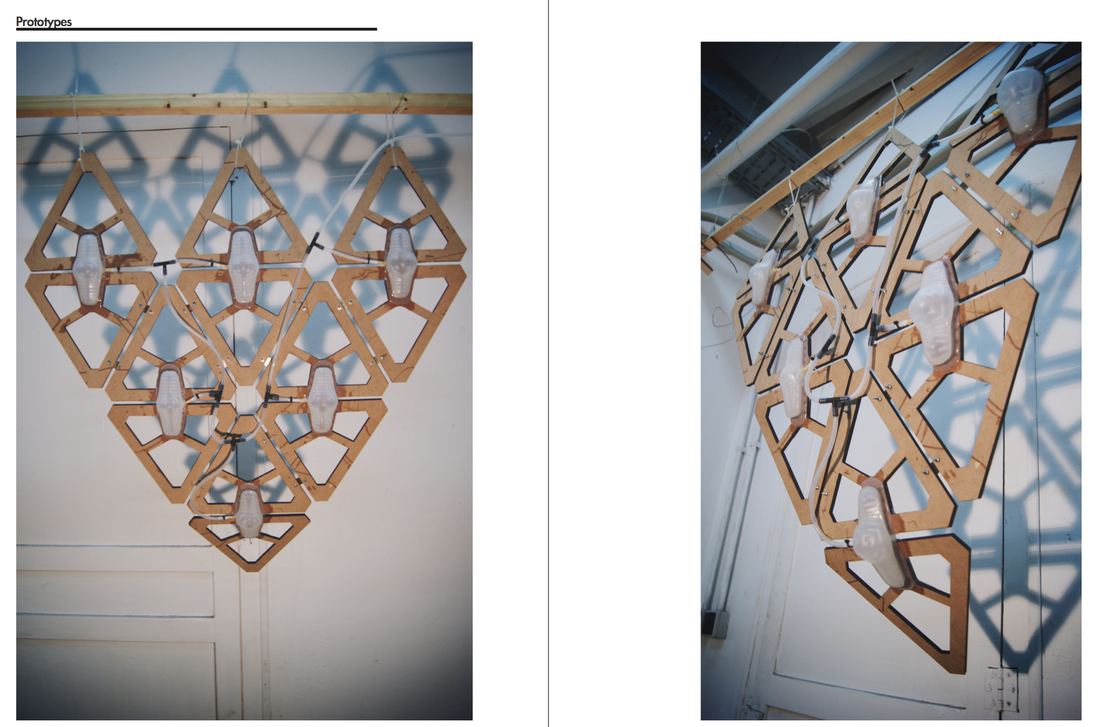Groundfloor - Where the Building meets the Town
|
Typology:
Facade System |
Status:
Prototype |
Research Center:
IAAC - Open Thesis Fabrication |
Advisor:
Areti Markopoulou Silvia Brandi, Marc Viader, Victor Iribas, Guillem Camprodon, Luis Fraguada |
Design
Moritz Begle |
What we have are closed, self-absorbed buildings. What we would like to have is open, versatile, interesting and safe cities. The challenge is how to incorporate large buildings in cities where people have the same small stature and slow space they had hundreds of years ago. There is now a considerable confusion in the gap between large and small scales and between ‘quick’ and ‘slow’ architecture. Ground floor facades provide an important link between these scales and between buildings and people. For public space and buildings to be treated as a whole, the ground floor facades must have a special and welcoming design. This good, close encounter architecture is vital for good cities.
( Close encounters with buildings Jan Gehl*, Lotte Johansen Kaefer and Solvejg Reigstad)
( Close encounters with buildings Jan Gehl*, Lotte Johansen Kaefer and Solvejg Reigstad)
|
An important behavioural factor for facade design is the support effect, which refers to the human preference for standing or sitting and being protected at a fixed point. We have lost this important factor! Buildings became introverted, boring, efficient and separated from the public space.
So the aim is to create a responsive facade that on the one hand protects the people from enviromental conditions, like sun and rain IN- & OUTSIDE of the building and on the other hand becomes part of the public space that is able to interact and correspond to the peoples needs and activities. First in collab. with Storaenso (wood company) and Baobab- Fusters (carpenter) a catalog of the hygroscopic behavior of wood has been created. Different types, thicknesses, and stiffnesses of wood have been tested in a controlled environment in order to see which material has the best performance for a responsive system. As a result 5mm thick Pine responded very quickly (5min) but it took nearly 4h to get back into its "original" position. Therefore the principle of the expanding wood-cell has been taken and been applied to a different material (Silicone) for more control. A high density channel structure lead to strong and big bending movements. At the moment of inflation it is pushing the material in between which is bending directly the connected not expanding - sublayer. Finally the two materials (silicone & wood) are being joined together to one composite material. The idea it is to provide a basic panel system for designers, architects,etc.. who can assemble or even re-designed it according to their needs. Conforming to the density and where the cuts are being placed , diffrent angles of deformation can be approached . The dimensions have to vary as each single peace has to deal with a diffrent amount of forces according to their position in the facade. The Silicone will take over two functions. On the one hand, it wil be part of the air/water system and on the other it will connect the pannels to eachother. In other words structure, system and joint are out of the same material. |
Special thanks to: Aldo Sollazzo, Robert Garita,
Vincenc Guixa





